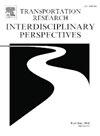Simpson’s paradox: A collection of examples from road safety studies and emergency medicine
IF 3.8
Q2 TRANSPORTATION
Transportation Research Interdisciplinary Perspectives
Pub Date : 2025-05-01
DOI:10.1016/j.trip.2025.101471
引用次数: 0
Abstract
Simpson’s paradox, first described in 1951, denotes a reversal of a difference or ratio when data for several groups are added up. This paper illustrates the paradox by means of examples taken from road safety studies and emergency medicine. These examples are only intended to show how the paradox can arise. It is not known how common the paradox is or how often it goes undetected. If undetected, it can lead to erroneous conclusions, for example that women have a higher accident rate than men, when in each group formed according to annual driving distance the opposite is the case. The reversal of the difference occurs because there is an interaction between gender, driving distance and accident rate. Women drive shorter than men, and shorter driving distances are associated with higher accident rates than longer driving distances.
辛普森悖论:来自道路安全研究和急诊医学的一系列例子
辛普森悖论于1951年首次被提出,它表明,当几个群体的数据相加时,差异或比率会发生逆转。本文以道路安全研究和急诊医学为例说明了这一悖论。这些例子只是为了说明悖论是如何产生的。目前尚不清楚这种悖论有多普遍,也不知道它有多常被发现。如果不被发现,它可能会导致错误的结论,例如,女性的事故率高于男性,而在根据年驾驶距离组成的每一组中,情况恰恰相反。这种差异之所以发生逆转,是因为性别、驾驶距离和事故率之间存在相互作用。女性开车的时间比男性短,而较短的驾驶距离比较长的驾驶距离与更高的事故率相关。
本文章由计算机程序翻译,如有差异,请以英文原文为准。
求助全文
约1分钟内获得全文
求助全文
来源期刊

Transportation Research Interdisciplinary Perspectives
Engineering-Automotive Engineering
CiteScore
12.90
自引率
0.00%
发文量
185
审稿时长
22 weeks
 求助内容:
求助内容: 应助结果提醒方式:
应助结果提醒方式:


